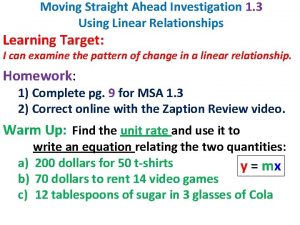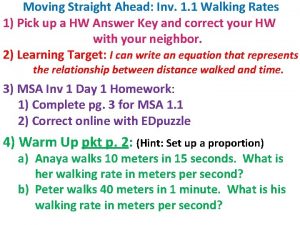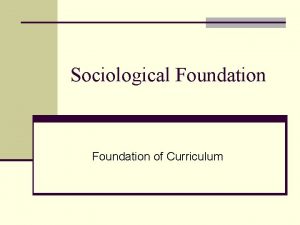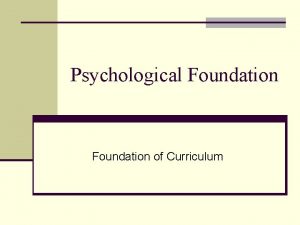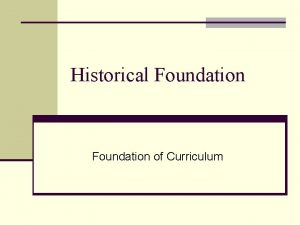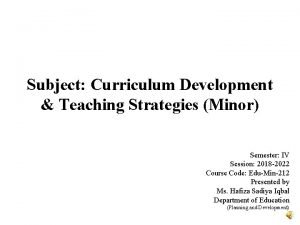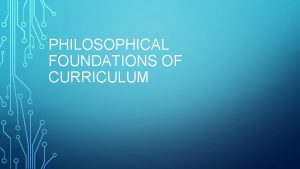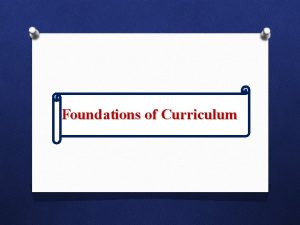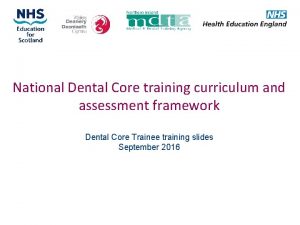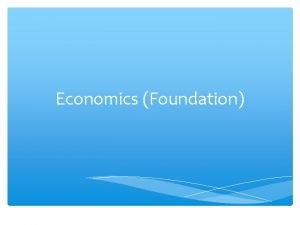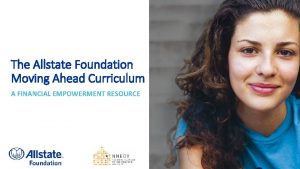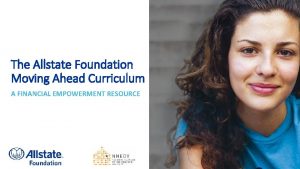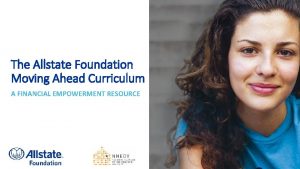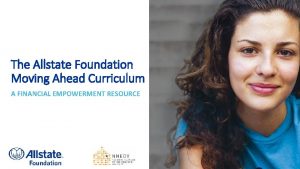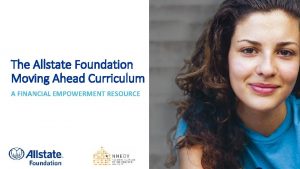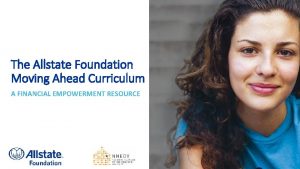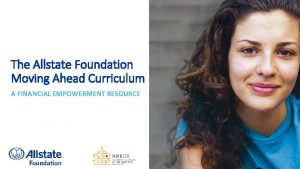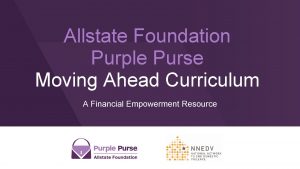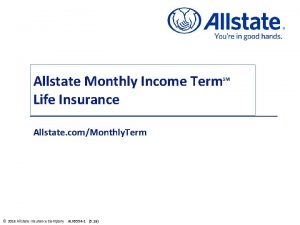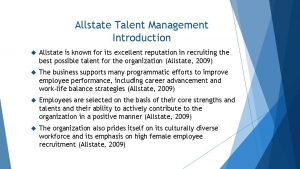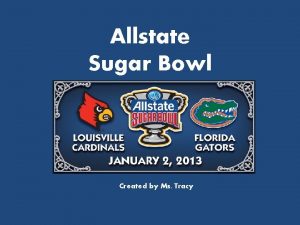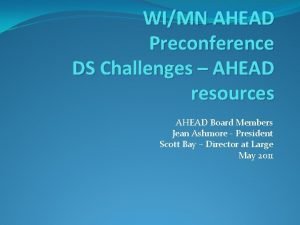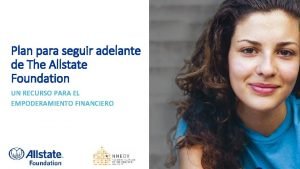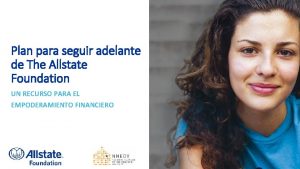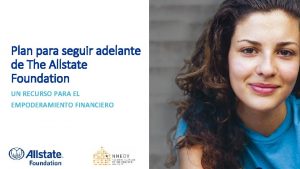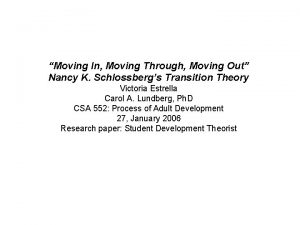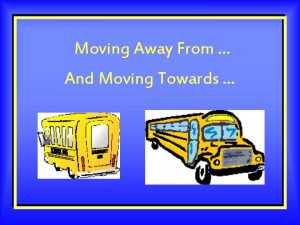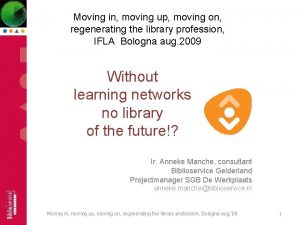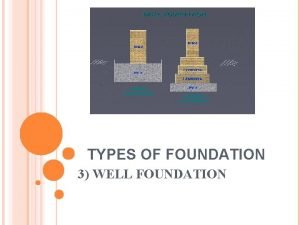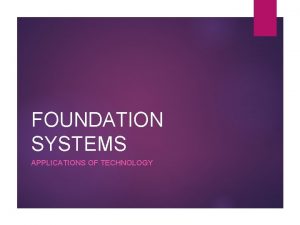The Allstate Foundation Moving Ahead Curriculum A FINANCIAL





























- Slides: 29

The Allstate Foundation Moving Ahead Curriculum A FINANCIAL EMPOWERMENT RESOURCE

MODULE 2 Learning Financial Fundamentals Key topics covered in this module include: • Financial Management • Budgeting and Saving • Assets and Liabilities • Banking Options

MODULE 2 Financial Management

Reflection • On a scale of 1 – 10, how comfortable are you with your personal finances? • Do you budget regularly? • For those who don’t, why not? • For those of you who do budget, what do you get out of it?

Financial Management • Most people have a limited amount of money to buy what they need and want – Must make careful decisions about how to use the money available • Become Informed – Talk to family, friends or co-workers you trust; ask them for advice – Consult a professional – Access trusted websites for easy-to-understand information – Look for free community financial workshops or seminars • Worst-Case Scenario – “What’s the worst that can happen? ” – Create a plan to address it • Take Action – Set small, obtainable goals and being working toward them There will be setbacks along the way; don’t let them derail your attempts at financial stability.

Prioritizing Expenses • It is important to distinguish between “needs” vs. “wants” when making financial decisions. Needs • A must have in order to survive, such as food and shelter • Example: A glass of water Wants • Not an essential; makes life easier or more enjoyable • Example: An expensive sparkling, bottled water

Public Benefits • Explore all public benefit programs available; vary by state • TANF – Temporary Assistance for Needy Families • FVO (Family Violence Option) – provides provisions for person who victims of domestic violence; requires: – Screening for domestic violence or abuse – Confidentiality protected for victims/survivors – Information and referrals – Can provide waivers for program requirements if they make it more difficult to escape/prevent abuse or unfairly penalize victims § § Time limits Residency requirements (fleeing) Child support cooperation (good cause) Family cap • Explore all pros and cons to disclosure Benefits. gov can help you find federal benefits you may be eligible for

Public Assistance • May include: – Cash assistance – Child support – Food stamps – Free or reduced school lunch – Medical insurance and assistance – Disability • Be prepared to: – Provide required documentation § Proof of identify, SSN, number in household, etc. – Meet eligibility qualifications – Show income and assets proof – If homeless or living in shelter, ask about priority processing – Meet regularly with a caseworker

MODULE 2 Budgeting and Saving

Why Budget? • Budgeting is a tool to help you make critical spending decisions • Useful to help keep spending on track and uncover unnecessary expenses • Can help you set goals for both short and long-term • Don’t let anxiety over debt keep you from budgeting and taking steps toward financial security • Debt is common in the United States

Steps to Creating a Budget • Step 1: Identify Net Monthly Income – Money that comes into your household, after deductions • Step 2: Identify Monthly Expenses – Such as rent, utilities, insurance, and other expenses like food – Distinguish between fixed and flexible expenses • Step 3: Subtract Total Expenses from Total Income – If negative, can your expenses be reduced? Or is it possible to earn more income? – If on paper there should be funds left over but you often run out of money, figure out where your “spending leaks” are

Sample Budget: Fixed Expenses Monthly Income: Monthly Fixed Expenses: Rent / Mortgage Health / Medical Insurance Vehicle Insurance Other Insurance/s Vehicle Payment/s Other Loan Payments Long-Term Savings Emergency Savings Other (list)

Creating a Savings • Savings must be treated as part of your budget • Pay yourself FIRST! – No matter how small – Consider a percentage of income • If you don’t have enough money to cover all the expenses, consider: – Working extra hours, if possible – Create home-based micro-business or the gig-economy § Uber, Lyft, Airbnb, Rover, Etsy, – Reduce or limit ‘wants’ § Example: eating out

Sample Budget: Flexible Expenses Monthly Flexible Expenses: Utilities (electric, gas, water, etc. ) Credit Card Payments Auto Upkeep (gas, maintenance, etc. ) Food (at home and eating out) Household Supplies Recreation / Entertainment Childcare Personal Allowances Other (list) Total Monthly Expenses Total Income Minus Total Expenses

Emotional Spending: Budget Buster • For many of us, emotions and money can be closely tied • When leaving a controlling and abusive relationship, many will finally feel free to spend how they want • Address emotional spending by: – Planning for economical ways to enjoy new freedom – Creating a timeline and remind yourself of your financial goals – Examine your feelings and notice when you’re being tempted to overspend

Dealing with Emotions and Spending • Step 1 – Write down your financial goals § Estimate how much time and money each will take • Step 2 – Keep written goals in a place where you will see them § Set electronic reminders • Step 3 – Examine your feelings and notice when you are being tempted to overspend § Find alternatives § Put off the purchase for 1 day

Before You Spend, Ask Yourself… • Did I compare prices? • Is this a need? • Can I afford it? • Will this delay me from reaching my goals? – If you have to borrow in order to buy something, it will take longer to reach your goals

Having Fun Without Breaking the Bank • Treating yourself: • Treating your children: – Give yourself a manicure – Cook or bake together – Enjoy your favorite dessert at – Read them a story Take the time to create a list of things you enjoy doing and that home – Spend the day at the library you find relaxing. This is a tough journey, so take time for yourself to celebrate your accomplishments, re-group and re– Read a good book – Play their favorite game with them charge. – Spend time with a friend – Invite their friends for a sleepover – Go for a walk – Invite friends over for a potluck to share the cost of food Include your kids when creating the family financial goals. This can be helpful when tough decisions need to be made.

Start Saving • Ideally, an emergency savings fund should have enough money to cover 3 - 6 months of living expenses (the ‘needs’) • Start with a realistic savings goal, i. e. one month’s housing Year Deposit Interest Total Deposit Interest Balance 1 $120. 00 $1. 31 $121. 31 2 $120. 00 $3. 76 $240. 00 $5. 07 $245. 07 3 $120. 00 $6. 26 $360. 00 $11. 33 $371. 33 4 $120. 00 $8. 81 $480. 00 $20. 14 $500. 14 5 $120. 00 $11. 41 $600. 00 $31. 55 $631. 55 – Once you meet that goal, you can add to it – Start now and be consistent • Better to save $10 every month than $25 when you have it - make compound interest work for you – Automatic transfer or direct deposit can build your savings over time – Saving just $10 a month at 2% interest would grow to over $630 in 5 years

Types of Savings Accounts Interest-Earning Savings Accounts • Typically these accounts will earn you the least interest of all the options; however they are safe and a good place to start. Money Market Accounts • These typically pay about. 5% higher interest than a traditional savings account • May require a higher minimum balance. • There are limits on the number of transactions allowed per month. Certificates of Deposit (CD) • May be a good option for funds you won’t need to access for a specific amount of time; • Terms can be 3 months to 6 years. • There are penalties for early withdrawals, so choose a term you can live with.

MODULE 2 Assets and Liabilities

Assets Cars Collections • What is an asset? • An asset is property owned by a person or company that has value and is available to meet debts or commitments • It is important to take stock of your assets: individually owned assets, jointly owned assets, and assets owned by your partner • An asset is what you OWN! Real Estate Insurance Cash / Bank Accounts / Investments Assets

Liabilities Credit Cards Loans • What is a liability? • A liability is a legally binding obligation that is payable to another person or company. • It is important to take stock of your liabilities: individually owned liabilities, jointly owned liabilities, and liabilities owed by your partner. • A liability is what you OWE! Payment Plans Liabilities

Taking Stock of Assets and Liabilities • Is there property or financial assets held in both names? • Is your apartment or other leases in both names? • Are there loans in both names? • Do you have joint bank accounts? • Is there a pension or retirement plan from current or previous employer? • Are there high-value items that should be accounted for? • Tools, collections, etc. Mediation may also be court ordered for some couples to determine ownership of assets and obligation of liabilities.

Mediation • Sorting through a financial relationship you shared with an abusive partner can be difficult and sometimes dangerous • Following separation and during a divorce process, abusive partners often refuse to cooperate. You may discover that your partner has: – Opened accounts and created additional debt in your name. – Hidden or undervalued his own assets. – Refused to comply with payment plans established by creditors. – Quit his job or obtained a low-paying job to escape financial responsibility. • You may be asked to use a mediator to resolve financial obligations or even custody of children • It requires that partners work together to reach a settlement and could require many meetings. May not be a good or safe option for victims of domestic violence

MODULE 2 Banking Options

Find What Works for You • Banks: financial institutions that accept deposits and channel money into lending activities. Traditional banks serve the general public. • Credit Unions: community-based financial cooperatives that offer a wide range of services and serve their members. • Check Cashing Stores: businesses that cash checks for a fee; generally about 4% of the amount of the check. • Payday Lenders & Car Title Loans: provide small cash advance, short-term loans, typically with very high interest rates; some are as high as 400% APR. Did you know? Unbanked consumers are about 6 times more likely to use costly check- cashing services.

Banking • Will require proof of: – Name – Date of Birth – Residence – Identification number § SSN § ITIN § Employer ID • Banking tips: – Keep your PIN private – Be aware of ALL banking fees § Use ATM owned by your bank to bypass fees § Use free ‘cash back’ option if free when making purchases – Online banking may offer addition convenience and savings

The Allstate Foundation Moving Ahead Curriculum A FINANCIAL EMPOWERMENT RESOURCE
 Allstate purple purse curriculum
Allstate purple purse curriculum Moving straight ahead investigation 1
Moving straight ahead investigation 1 Moving straight ahead answer key
Moving straight ahead answer key April savoy allstate
April savoy allstate Pad foundation section
Pad foundation section Composition of urine
Composition of urine Sociological foundation of curriculum
Sociological foundation of curriculum Behaviorism curriculum
Behaviorism curriculum Historical basis of curriculum
Historical basis of curriculum Pragmatism and curriculum
Pragmatism and curriculum Philosophical foundation of curriculum
Philosophical foundation of curriculum Sociological bases of curriculum
Sociological bases of curriculum Philosophical foundatioins of curriculum
Philosophical foundatioins of curriculum Dental core training
Dental core training Economic foundation of curriculum
Economic foundation of curriculum Hát kết hợp bộ gõ cơ thể
Hát kết hợp bộ gõ cơ thể Slidetodoc
Slidetodoc Bổ thể
Bổ thể Tỉ lệ cơ thể trẻ em
Tỉ lệ cơ thể trẻ em Chó sói
Chó sói Chụp phim tư thế worms-breton
Chụp phim tư thế worms-breton Bài hát chúa yêu trần thế alleluia
Bài hát chúa yêu trần thế alleluia Các môn thể thao bắt đầu bằng tiếng chạy
Các môn thể thao bắt đầu bằng tiếng chạy Thế nào là hệ số cao nhất
Thế nào là hệ số cao nhất Các châu lục và đại dương trên thế giới
Các châu lục và đại dương trên thế giới Cong thức tính động năng
Cong thức tính động năng Trời xanh đây là của chúng ta thể thơ
Trời xanh đây là của chúng ta thể thơ Cách giải mật thư tọa độ
Cách giải mật thư tọa độ Làm thế nào để 102-1=99
Làm thế nào để 102-1=99 Phản ứng thế ankan
Phản ứng thế ankan

